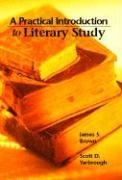Read more
This brief, practical book addresses how and why people read literature, and then shows different ways of thinking about the literature they are reading?teaching users to read critically and analytically, to write thoughtful and concise papers of literary analysis, and to perform competent literary research. The book's comprehensive coverage offers a detailed description of practical research methods, an understanding of criticism and how to use it in papers, and a complete section on MLA documentation. The main topics address: what is literature and what is critical thinking?; reading critically; understanding literary language; explication and analysis; and secondary sources, research, and critical theory. For those new to literary study.
List of contents
I. LITERATURE AND CRITICAL THINKING.
1. Literature and the Literary Canon.
2. Challenges to the Canon.
3. Why Read Literature?
II. READING CRITICALLY.
4. The Act of Reading.
5. Reading Fiction Actively.
6. Engaging with Poetry.
7. Experiencing Drama.
8. Analytical Reading.
III. UNDERSTANDING LITERARY LANGUAGE.
9. The Elements of Narrative.
10. Figurative Language.
11. Prose Genres.
12. Poetry, Forms and Genres.
13. Drama.
IV. EXPLICATION AND ANALYSIS.
14. From Reading to Writing.
15. Formulating an Argument.
16. Citing Primary Texts and Formatting Your Paper.
17. Practical Advice.
18. Sample Student Essay 1.
19. Sample Student Essay 2.
V. SECONDARY SOURCES, RESEARCH, AND CRITICAL THEORY.
20. Research Methods in the Digital Age.
21. Reading Literary Criticism.
22. Practical Advice for Reading and Evaluating Literary Criticism.
23. Plagiarism and Academic Honesty.
24. MLA Documentation Style.
25. A Brief Introduction to Critical Theory.
26. Reading a Theory-Based Article.
VI. READINGS.
Glossary.
Bibliography.
Index.
Summary
For undergraduate courses in Introduction to Literature, Writing about Literature, and Composition and Literature.
Designed for students new to literary study, this brief, practical text addresses how and why people read literature, and provides students with different ways of thinking about the literature they are reading.

